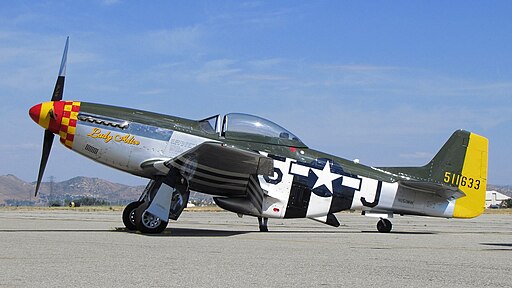Major Richard “Pete” Peterson’s tale stands as a beacon of heroism and inspiration amidst the diverse stories of World War II heroes. Stationed at Leiston, England, this remarkable pilot not only demonstrated exemplary skill in the cockpit but also illustrated the profound human connection that existed beyond the battlefield. Peterson’s journey through the tumultuous skies of the European theater began in January 1944. It spanned till March 1945 – a period wherein he stood out not just for his airmanship but also for the poignant symbolism of his aircraft.
Major Peterson flew four distinct P-51 Mustangs throughout his tenure, each bearing the same emblematic name – “Hurry Home Honey.” Far from a random choice, this moniker was inspired by the unwavering love and support he received from home. Each letter Peterson’s wife sent across the Atlantic concluded with this line, a simple yet powerful reminder of the life and love that awaited him once the propellers came to a halt.
For Peterson, these three words weren’t just an endearing note from his beloved but a beacon, guiding him through the smoke-filled skies and relentless gunfire. They symbolized hope, love, and the promise of a peaceful tomorrow. Each time he climbed into the cockpit, that name painted on the aircraft’s fuselage served as both a motivation and a mantra.
The Leiston base was a hive of activity during the war, and many pilots came and went. However, Peterson’s outstanding record set him apart. Completing two full tours of duty, he achieved the status of a ‘Triple Ace,’ an accolade reserved for the few who had managed to down fifteen enemy aircraft. Yet, beyond these commendable statistics, it’s his profound human connection that resonates deeply.
Such tales of valiance are often filled with stories of dogfights, near misses, and strategic victories. While Peterson’s record was replete with such instances, his intrinsic link to “Hurry Home Honey” added a unique layer to his legacy. The juxtaposition of the brutal realities of war against the gentle reminder of love was a testament to the duality soldiers often faced. While they donned the armor of warriors in battle, at heart, they remained loving husbands, devoted fathers, and cherished sons, sincerely longing for the familiar comfort of home.
Major Peterson’s story echoes the many tales of bravery that sprung from the stories of World War II. Yet, what sets his tale apart is the deeply personal touch interwoven with his acts of courage. Each sortie he flew, each mission he embarked upon, was not just for the larger cause but also for that quiet moment when he could finally heed the call of “Hurry Home Honey.”
In retrospect, stories like Major Richard “Pete” Peterson’s remind us of the profound human connections that endure even in the most trying times. Amidst the thunder of guns and the roar of engines, love, hope, and a promise kept many soldiers soaring high, heading home.
For more insights into the P-51D and other important military aircraft, visit Aces In Action. Here, you’ll find an amazing piece of artwork by Craig Tinder titled “Hurry Home Honey,” which commemorates pilot Maj. “Pete” Peterson and includes a one-of-a-kind relic from a P-51D Mustang.
Hurry Home Honey – P-51D Aviation Art by Craig Tinder
Triple World War II Ace, Major Richard “Pete” Peterson was based at Leiston England and fulfilled two complete tours of duty. From January 1944 to March 1945, he flew four different P-51 Mustangs, all named “Hurry Home Honey”, which was the last line his wife wrote in each letter to him.






Share:
Olympic’s War Service: From Luxury Liner to Troop Ship—The Titanic Sister’s Unsung Valor
Fork-Tailed Devil: Why the Germans Feared the P-38